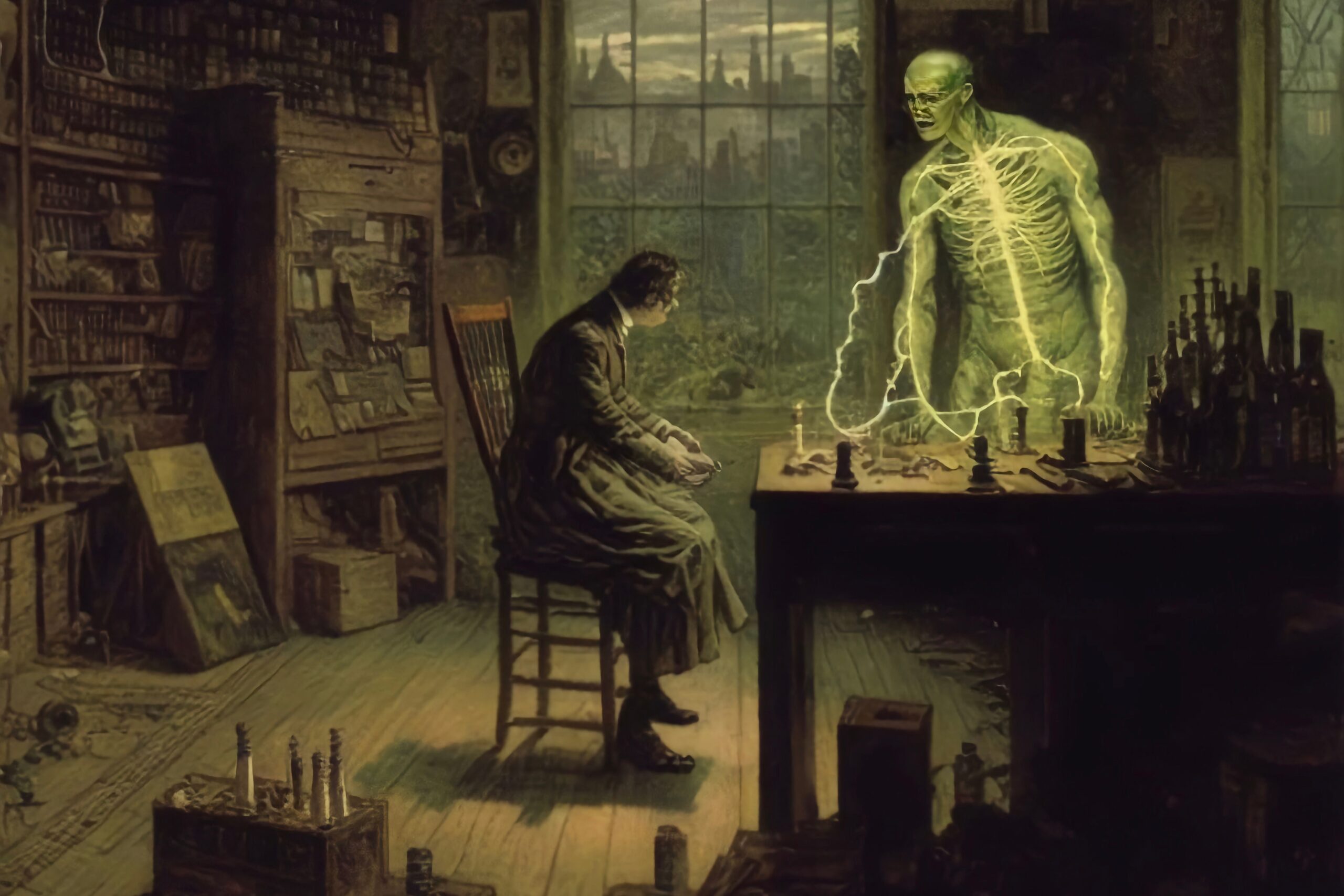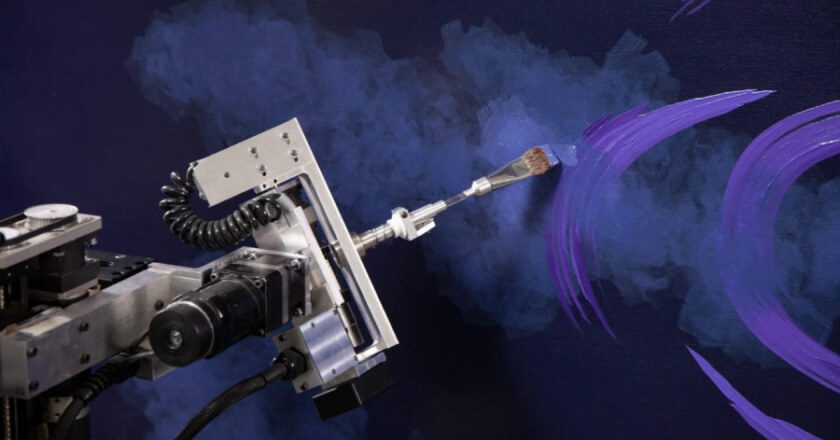Get Inspired
Build the life you love. Learn more about fusioneering:

Posted on October 25, 2023 in Inspirational People
Here at the Kirby Foundation, we strive to highlight the inspirational fusions that can be made with art and science (like Dulcinea, the robot artist that paints like a classical master). Today, in the 21st century, it’s easy to see the myriad ways in which art and technology support each other, and topics of science and technology are dominant in most forms of media. However, two centuries ago, the sciences and the arts were often considered wholly separate beasts.
In the early 19th century, amidst the backdrop of the Industrial Revolution and the Enlightenment, an intellectually curious young woman named Mary Shelley penned a literary masterpiece that would forever alter the course of literature and science. Her novel, Frankenstein; or, The Modern Prometheus, published in 1818, stands as a testament to her exceptional ability to intertwine the realms of science and art, birthing one of the very first science fiction novels.
Read More: Another Incredible Female Innovator from the 19th Century – Ada Lovelace
To craft her groundbreaking novel, Shelley needed to draw from a diverse range of sources, both scientific and literary, that would allow her to weave a narrative that resonated deeply with contemporary scientific discourse and artistic sensibilities.
Shelley was exposed to scientific ideas through her upbringing and the intellectual circles she frequented. Her father, William Godwin, was a prominent writer and philosopher, and her mother, Mary Wollstonecraft, was a pioneering feminist writer. These connections exposed her to a world of intellectual exploration, including discussions about the moral and ethical implications of scientific progress. The educated circles Shelley ran in gave her access to the scientific literature of her era, which was undergoing a transformational period marked by discoveries in electricity, chemistry, and biology. Scientists like Luigi Galvani and Alessandro Volta, whose work explored the relationship between electricity and the human body, left a significant imprint on her understanding of the potential intersections between science and life.
Related: Artificial Life, the “Coded Science” of the Biological World
The genesis of Frankenstein can be traced back to the summer of 1816 when Mary Shelley, Percy Bysshe Shelley, Lord Byron, and others gathered at Lord Byron’s villa near Lake Geneva. As part of a friendly competition, the group decided to write ghost stories to entertain themselves during a period of inclement weather that confined them indoors. It was during this creative challenge that Mary Shelley conceived the idea for her Modern Prometheus.
Inspired by the scientific discussions of the time and her own musings on the moral implications of scientific inquiry, Shelley began to imagine a story where the boundaries between life and death were blurred. She envisioned a “mad scientist” who pushed the boundaries of human knowledge by reanimating dead tissue, ultimately giving birth to a creature whose existence raised profound questions about identity, responsibility, and the consequences of scientific hubris.
Frankenstein was the archetype of a new genre: science fiction.
Related: Sci-Fi’s Best AI Creations
Shelley’s groundbreaking novel was initially published anonymously in 1818, when Shelley was 21. The book’s reception was mixed, with some critics praising its innovative blend of science and horror, while others were critical of its dark and unconventional themes and the novel’s challenge to the prevailing notion that all scientific progress was good.
In the years that followed, the novel gained recognition and Mary Shelley was acknowledged as its author. The book garnered increasing attention and was seen as a reflection of the anxieties and ethical dilemmas surrounding the rapid advancements during the Industrial Revolution.
Now, Frankenstein has entirely permeated popular culture, from countless film adaptations to stage plays, comic books, and even Halloween costumes and toys. The image of the hulking, misunderstood creature created by Victor Frankenstein has become an iconic symbol of the perils of scientific experimentation.
Discover More: The Upside of Scientific Experimentation — 4 Amazing Helper Robots
Mary Shelley’s novel was a watershed moment in the history of literature because it introduced a unique and revolutionary blend of science and storytelling. Shelley’s narrative was not just a tale of horror; it was a profound meditation on the potential consequences of scientific advancements, a speculative look at future possibilities, and a probe into the ethical and moral dimensions of human innovation.
Frankenstein is often regarded as the first science fiction novel because it introduced a groundbreaking concept: the use of scientific principles to explore speculative scenarios and ethical dilemmas. Prior to “Frankenstein,” literature primarily consisted of romantic, gothic, or adventure tales, but Shelley’s work represented a departure from these conventions. She boldly ventured into uncharted territory by imagining a story rooted in contemporary scientific knowledge, pushing the boundaries of human understanding, and raising questions about mankind’s future. As the book’s success increased, it set a precedent for future writers to explore scientific and technological themes in their works. Authors like H.G. Wells, Jules Verne, and Isaac Asimov followed in Shelley’s footsteps, using science in fiction as a platform to speculate on humanity’s expansion into new depths of knowledge.
What new frontiers lie on the horizon? Who will explore them in writing? And, better yet, who will create writing’s new frontiers?
Could it be you?
Whether you love technology, art, or everything in-between, the Kirby Foundation has something for everyone. Follow us on Instagram, Facebook, and Pinterest to stay involved with every update and every advancement!
Are you interested in hearing the complete story of Paul and Dulcinea? Watch the video (nominated for Best Short Film at the 2021 Vail and Portland Film Festivals) for more info.
Want to be the first to know about every exciting new project at the Kirby Foundation?
Join Our Mailing ListBuild the life you love. Learn more about fusioneering:
Why pick which passion you should follow? Fusioneering allows you to cultivate many interests into something innovative and revolutionary.

Meet Paul and explore how blending your interests can empower you to follow your enthusiasm and bring your passions to life.